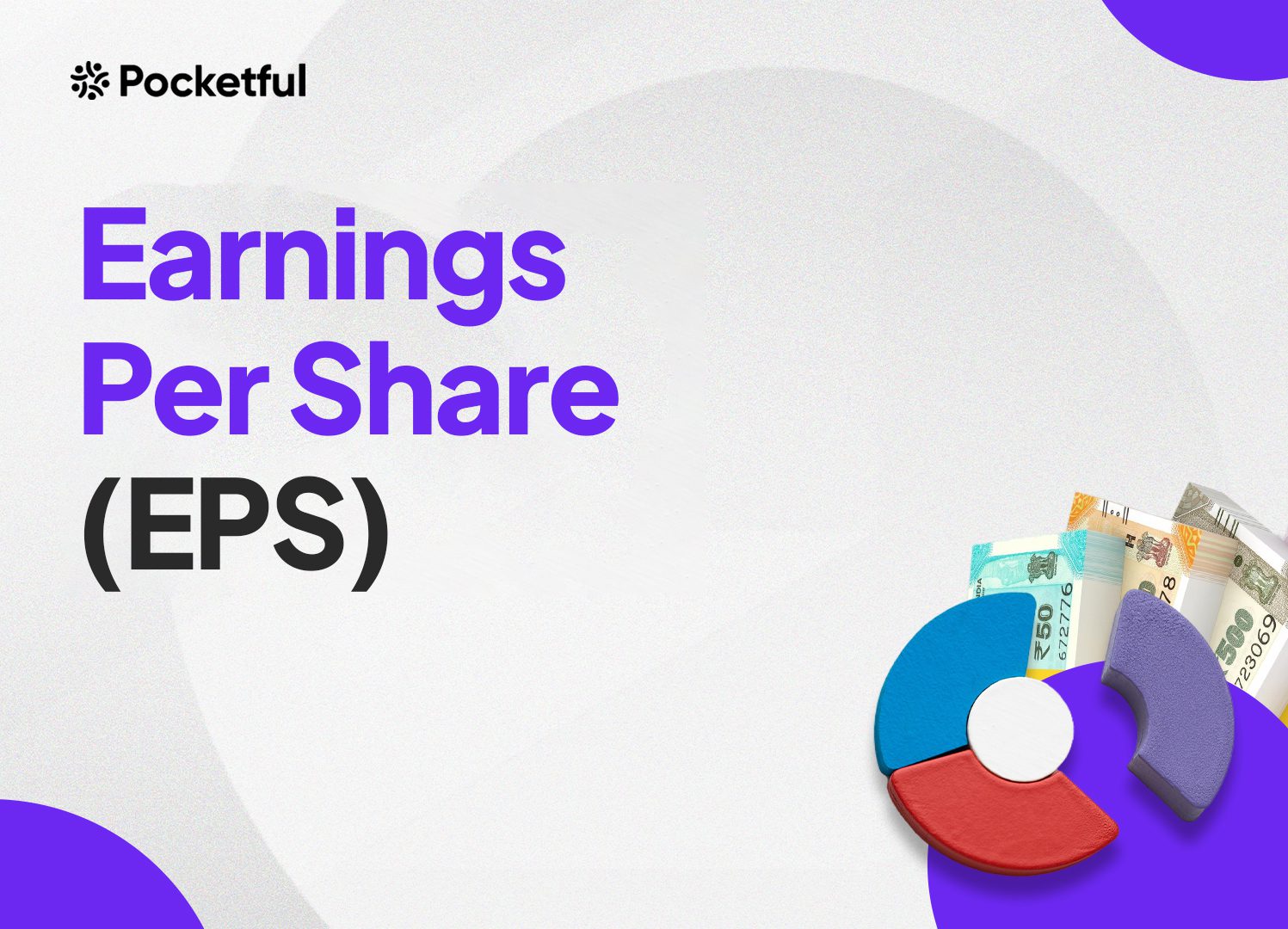| Type | Description | Contributor | Date |
|---|---|---|---|
| Post created | Pocketful Team | Jul-05-24 | |
| internal linking | Nisha | Feb-17-25 |
Read Next
- Rakesh Jhunjhunwala Portfolio 2025: Top Holdings & Strategy
- BankBeES vs Bank Nifty – Key Differences
- Current Ratio vs Quick Ratio Key Differences
- Best REIT Stocks in India 2025
- Best Data Center Stocks in India 2025
- Best Rare Earth Stocks in India
- Top 10 investment banks in India
- What Is iNAV in ETFs?
- Best Investment Options in India 2025
- Best Energy ETFs in India 2025
- Radhakishan Damani Portfolio 2025: Stocks & Strategy Insights
- Best SEBI Registered Brokers in India
- Best Air Purifier Stocks in India
- Best Space Sector Stocks in India
- Gold Rate Prediction for Next 5 Years in India (2026–2030)
- Difference Between Equity Share and Preference Share
- Vijay Kedia Portfolio 2025: Latest Holdings, Strategy & Analysis
- Raj Kumar Lohia Portfolio 2025: Holdings, Strategy & Analysis
- How to Earn Passive Income Through Dividend-Paying Stocks in India
- Top 10 Richest Investors in the World 2025 – Net Worth, Key Investments & Strategies
- Blog
- what is earnings per share eps
What is Earnings Per Share (EPS)?

When investing in stocks, you must have heard about the term “Earnings Per Share” or ”EPS”. The EPS metric is of great importance as it conveys the profitability of a company and the amount shareholders earn for each outstanding common stock.
In today’s blog post, we will introduce you to earnings per share, or EPS, and discuss its features, formula types and limitations.
What is Earnings Per Share (EPS)?
The amount of profit allotted to each outstanding share of the corporation is known as earnings per Share or EPS. It is a financial metric used to assess a business’s profitability. The company’s EPS value can be used to compare its profitability with its peers. A higher EPS indicates higher profitability. Various factors and metrics other than EPS must be considered to determine whether to purchase or sell this company.
Features of Earnings Per Share

EPS offers the following features:
1. EPS measures a company’s profitability and conveys the amount earned by each outstanding share of common stock.
2. The company’s net earnings are divided by the number of outstanding common shares to calculate EPS.
3. It measures the company’s financial health, indicating whether or not it is growing steadily.
4. Share repurchases reduce the number of outstanding shares and can raise EPS without a change in income.
EPS Formula

The formula to calculate EPS is explained below-
Earning Per Share = (Net Income – Preferred Dividends) / Common Shares outstanding at the end of the period.
The common shares outstanding change over the period of time, and thus, many analysts use weighted average common shares outstanding in the denominator.
Earning Per Share = (Net Income – Preferred Dividends) / Weighted Average Common Shares Outstanding during the period
Net income refers to a company’s earnings after taxes for a given fiscal year. Preferred dividends are the dividends given to preferred shareholders. Outstanding common shares denote the total number of shares currently held by shareholders.
To further understand this, let’s use the example of ABC Ltd., which reported earning Rs. 11 lakhs in net income for the previous fiscal year. The business distributed Rs. 1 lakh to preferred shareholders as a dividend. Additionally, there are 5 lakh outstanding common shares in total.
Now, we can compute ABC Ltd.’s EPS using the formula mentioned above:
EPS = (11,00,000-1,00,000)/5,00,000 = Rs. 2
Hence, in this case, the EPS of the company is Rs. 2 per share, which means that each shareholder earns Rs. 2 for each share held by them.
Read Also: Top 10 Cable Stocks in India
Types of Earnings Per Share

The various types of EPS are mentioned below:
1. Trailing EPS: This metric refers to a company’s earnings per share computed for the previous 12 months. Its calculation is straightforward and consistent. Trailing EPS is one of the most utilized measures. This measure uses actual data and does not depend on assumptions.
Trailing EPS = (Net Income of past 12 months – Preferred Dividends) / Weighted average common shares outstanding during the period.
2. Basic EPS: EPS is calculated by dividing net income by the weighted average common shares outstanding during the period.
Basic EPS = (Net Income – Preferred Dividends) / Weighted average common shares outstanding during the period
3. Diluted EPS: The impact of the company’s prospective convertible securities is considered when calculating diluted earnings per share. All convertible securities are assumed to be exercised and converted to common shares. It is the most elaborate method of EPS computation.
Diluted EPS = (Net Income – Preferred Dividends) / (Weighted average common shares outstanding + Shares from convertible securities)
4. Adjusted EPS: EPS is determined by removing the one-time income or expenses from the net earnings of the business to get an adjusted income measure.
Adjusted EPS = (Adjusted Net Income – Preferred Dividends) / Weighted average common shares outstanding during the period
Importance of Earnings Per Share
The following points highlight the importance of EPS:
- Through EPS, one can easily measure the profitability of the company.
- EPS allows you to easily compare the company’s profitability with its peers.
- A steady increase in EPS over time ensures an investor that the company is managing its resources optimally.
- Investors look at the company’s EPS growth rate when making investment decisions.
Limitations of Earnings Per Share
EPS has the following limitations:
- Generally, a historically low or high EPS does not mean that the company will perform similarly in future.
- Profitability can be significantly changed due to various external factors.
- Cash flows are not included while calculating the EPS. Therefore, it might not represent the exact financial position of the company.
- EPS can be artificially increased by reducing the number of outstanding shares. Outstanding shares can be reduced using buybacks.
Read Also: How to Find Winning Penny Stocks? Step by Step Guide
Conclusion
To sum up, EPS is a crucial financial metric for assessing the profitability of the business. The profit a shareholder earns for each share they own can be determined using EPS. Earnings per share provide significant insights and can help simplify investment decisions, but it is advised that before investing, a person should speak with their investment advisor.
Frequently Asked Questions (FAQs)
What is EPS?
Earnings per Share, or EPS for short, is a financial metric that shows how much profit is earned by each outstanding share. It is computed by dividing the company’s net income by the total outstanding shares.
Can a company have negative earnings per Share?
A business with negative income has a negative EPS.
When does the company report the EPS?
Companies generally report EPS on a quarterly or yearly basis.
What does adjusted EPS mean?
Any one-time income or expense is subtracted from the company’s earnings to get adjusted net income in the adjusted EPS formula. One-time gains and losses are removed to provide a more accurate net income measure that a company normally earns.
How does the buyback of shares impact the company’s EPS?
The company’s share repurchase program will directly boost earnings per share (EPS) since it will reduce the number of outstanding shares while net profit remains unchanged.
Disclaimer
The securities, funds, and strategies discussed in this blog are provided for informational purposes only. They do not represent endorsements or recommendations. Investors should conduct their own research and seek professional advice before making any investment decisions.
Article History
Table of Contents
Toggle